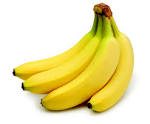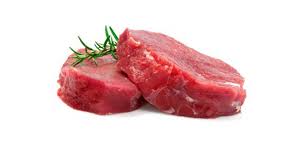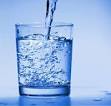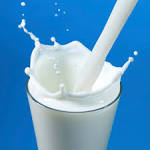Radioactivity
Radioactive elements (radionuclides) present all around us, including in our daily intake of food and drinks. Radioactive elements will emit radiation during the process by which a nucleus of an unstable atom loses energy. Even though radiation may cause harm to our body, it is important for us to know that radiation can also be used for our benefits, particularly in healthcare. For example, radiation is used in dental and chest X-rays, investigation of bone fractures, diagnostic procedures, and also for the treatment of cancer.
There are two sources contributing to the presence of radionuclides in our foods. It is either due to naturally occurring radionuclides1 found in soil, rocks or air or radioactivity contamination from man-made activities such as nuclear power plants. Radionuclides content in foods depend on the type of food, climate and the geographic region where the food has been produced. For example, foods produced in a country that hosts nuclear power plants may contain higher level of radioactivity. This is because when large amounts of radionuclides are discharged into the environment (especially release of radioactivity from nuclear power plant), they can affect food as it is taken up by plants, seafood or ingested by animals.
In Malaysia, activities involving radioactive material are under strict control by local authorities and thus did not affect much to the environment. Therefore, this article we will focus more on radioactivity in foods due to naturally occurring radionuclides.
Natural Radioactivity
The presence of natural background radiation in our surroundings is the fact that we need to accept. All of us breathe small amounts of the radon2., a natural radionuclide exist in air. Radon will also seeps into ground and homes/ buildings around us; therefore contributing to the amount of radiation received by public. Our bodies contain natural radioactivity from our daily intake of food and drink, and cosmic rays3 fall on us all the time. Diagram below shows estimation of the percentage of radiation sources in the United Kingdom (UK)
.
4Source: Health Protection Agency, United Kingdom.
1 Naturally occuring radionuclides – radioactive element that are naturally present in the environment
2 A gas that is formed during the decay of natural uranium in the soil
3 Radiation originating in outer space
What You Should Know?
1. Does natural radionuclides occur naturally in food?
Yes. There are some common sources of natural radionuclides in food such as Potassium-40 (40K) and Radium-226 (266Ra).
2. Why natural radionuclides can be found in our food?
Natural radionuclides are normally found in soil, water and air. Therefore, crops that are grown on the earth surface will absorb the radioactive material from soil and air. This is a natural pathway radioactive material present in our daily diet/foods.
3. What are the common natural radionuclides found in food and its radioactivity level?
|
Content of naturally radioactive material in foods, Potassium-40 & Radium-226
|
|||
|---|---|---|---|
|
No.
|
Type of foods
|
40K
pCi/kg (Bq/kg) |
226Ra
pCi/kg (Bq/kg) |
| 1. | Banana
|
3,520 (130)
|
1 (0.037)
|
| 2. | Brazil Nuts
|
5,600 (207.0)
|
1,000-7,000
(37-259) |
| 3. | Carrot
|
3,400 (125.8)
|
0.6 – 2
(0.0222 – 0.074) |
| 4. | White potato
|
3,400 (125.8)
|
1 – 2.5
(0.037 – 0.0925) |
| 5. | Red meat
|
3,000 (111)
|
0.5 (0.0185)
|
| 6. | Lima Bean (Raw)
|
4,640 (171.68)
|
2 – 5
(0.074 – 0.185) |
| 7. | Drinking water
|
–
|
0.17 (0.00629)
|
| 8. | Milk
|
1350 (49.95)
|
–
|
*Reading and units are shown on the unit ‘pCi’ or ‘picoCuries’. The word ‘pico’ reflects a very low reading with the constant 1 pico equal to 1.0E-12 (1.0×10-12). Unit ‘Curie’ or ‘Ci’ also describes a natural radioactive material that disintegrates in one second (1Ci ~ 1 disintegration / second) of any radioactive materials. 1 pCi equivalent to 0.037 Bq (Becquerel).
4. Does the level of natural radionuclides in the food will endanger our health?
No. The level of radiation exposure resulting from the food we eat is negligible and very low. At these levels, the radiation cannot give adverse effects on our health.
5. How to identify natural radionuclides in our food and is there any way to measure the quantity of these radionuclides?
Naturally occurring radionuclides in our food can be measured using special equipment called High Purity Germanium Spectroscopy (HPGe). This equipment is designed to measure the level of radioactivity in material and it is placed in research institutions/university approved by the government.
6. ADoes our food protected from unsafe levels of radiation?
Yes. In Malaysia, strict legal controls on activity involving ionizing radiation particularly on how radioactive waste is disposed. Therefore radioactive food contamination can be avoided.
References
- Sources and Effects of Ionizing Radiation; United Nations Scientific Committee on the Effects of Atomic Radiation (UNSCEAR) 2008 Report, United Nations (UN). 2010.
- Nuclear Accidents and Radioactive Contamination of Foods. World Health Organization (WHO). 2011
- Natural and Induced Radioactivity in Food. International Atomic Energy Agency (IAEA). IAEA-TECDOC-1287. 2002.
| Last Reviewed | : | 04 March 2016 |
| Writer/Translator | : | Syarul Iman bin Saufi |
| Accreditor | : | Dr. Bidi bin Ab. Hamid |















